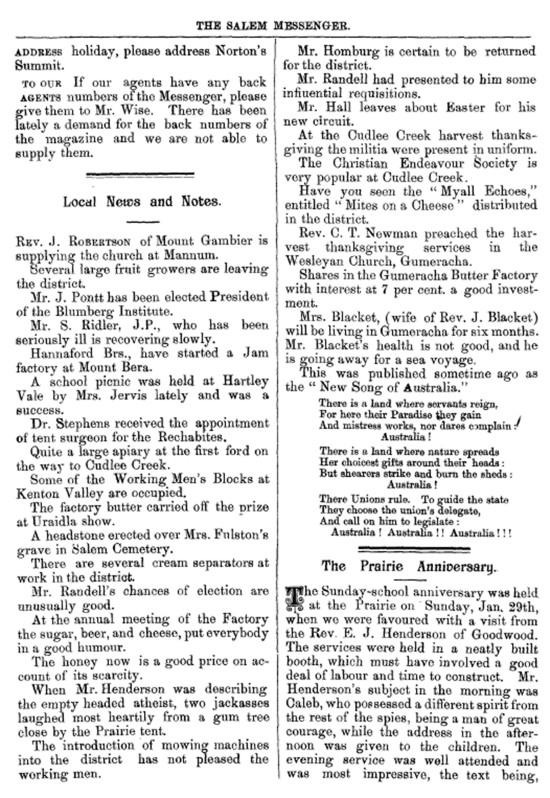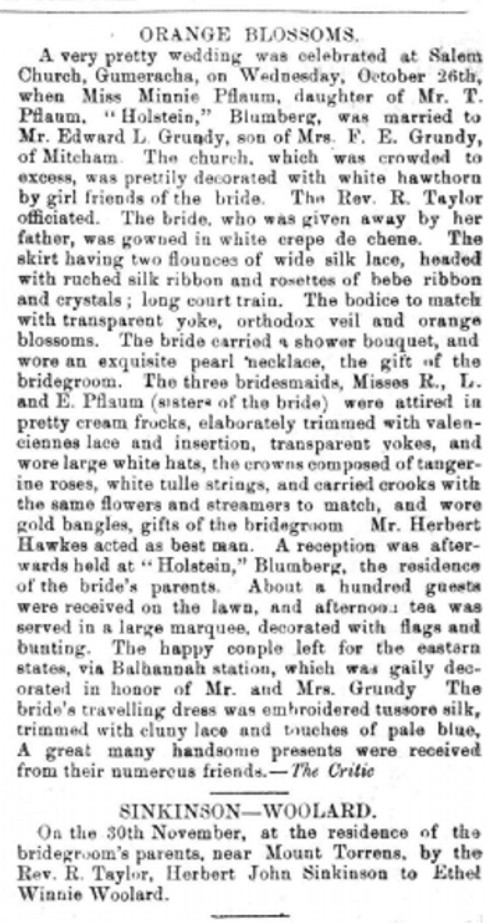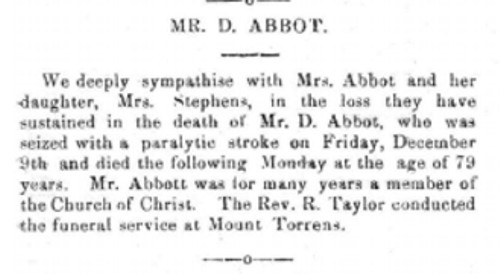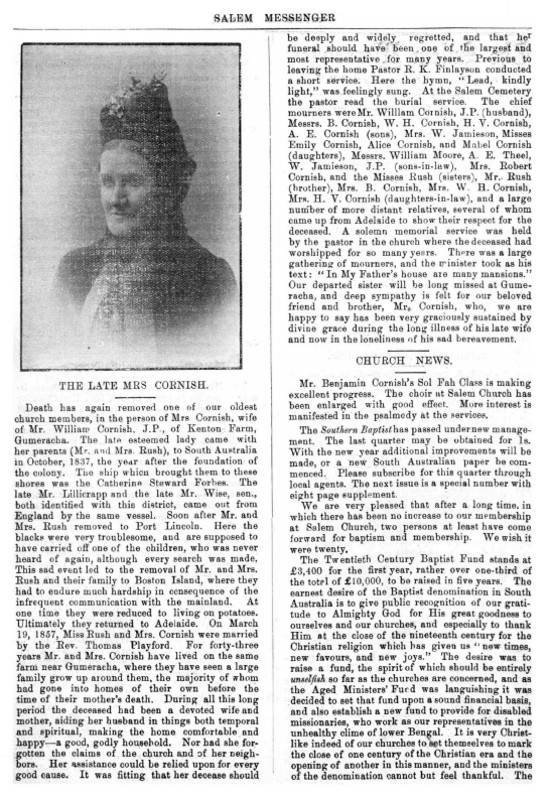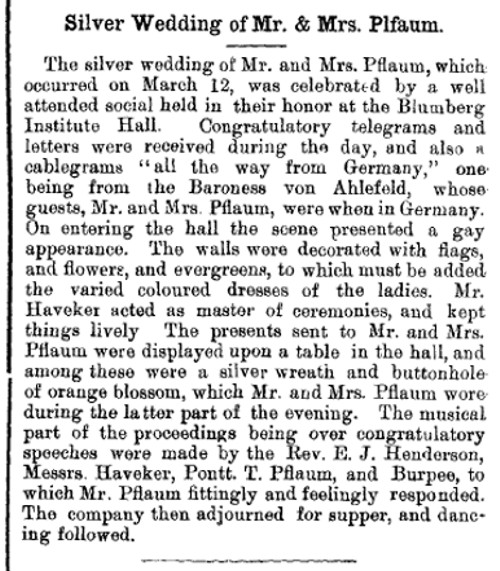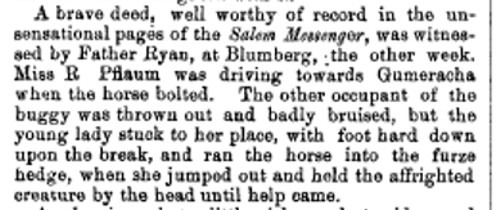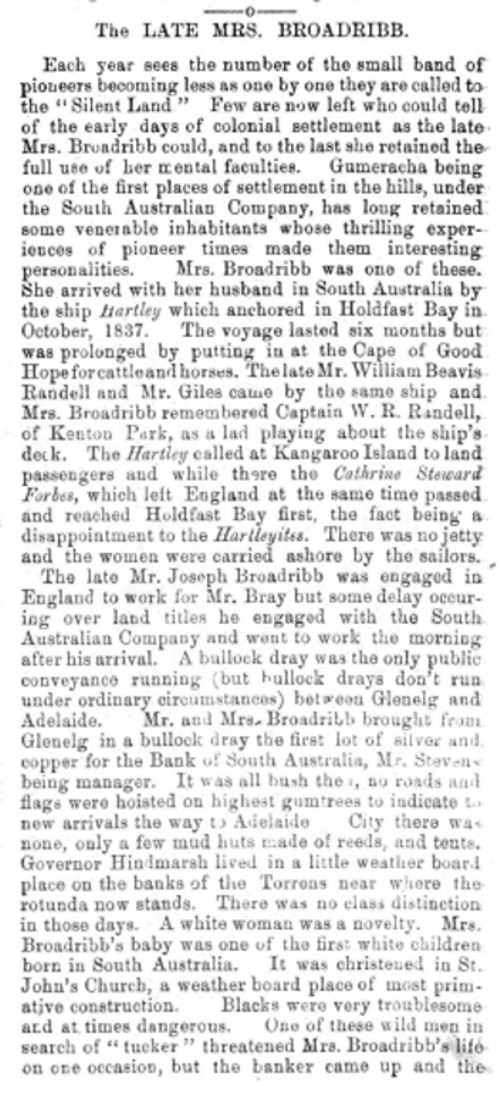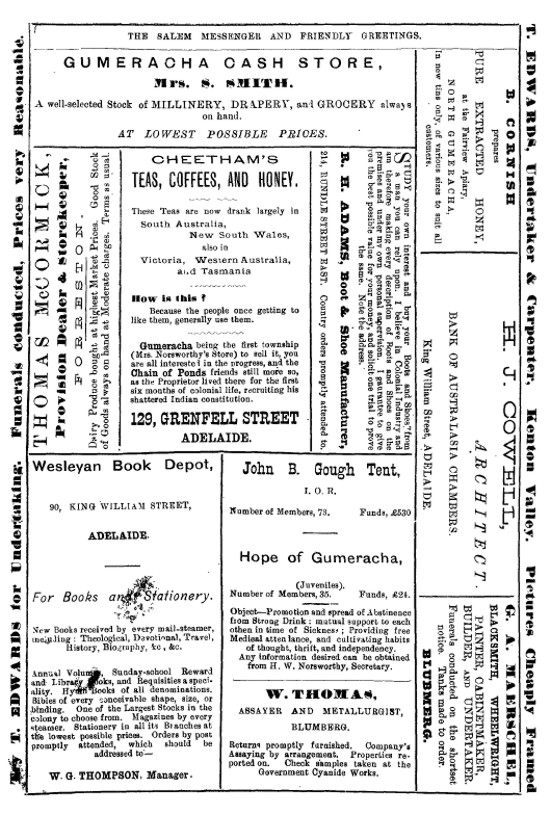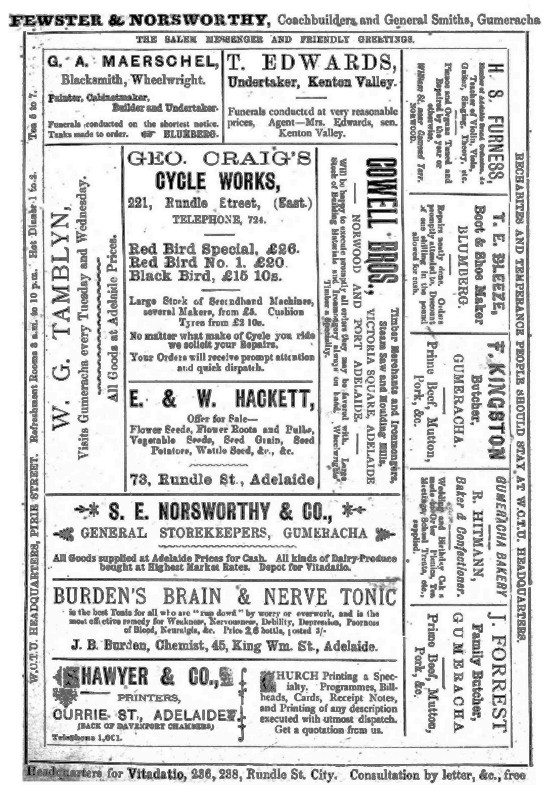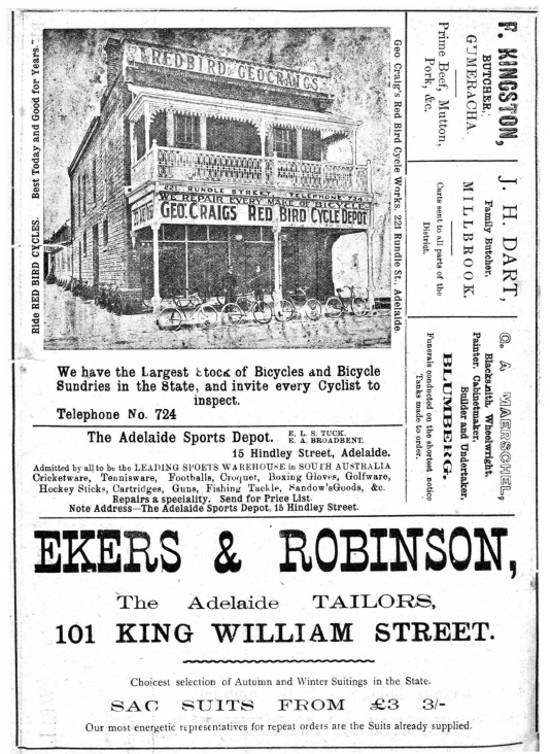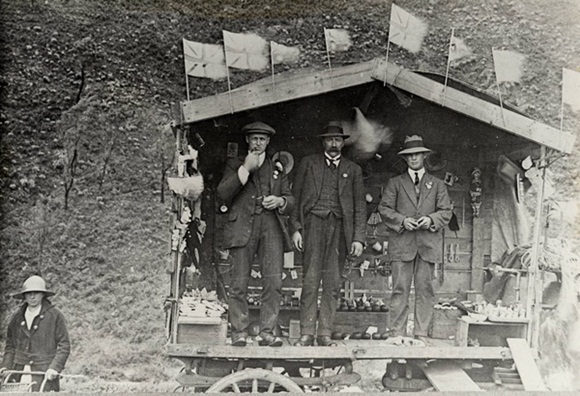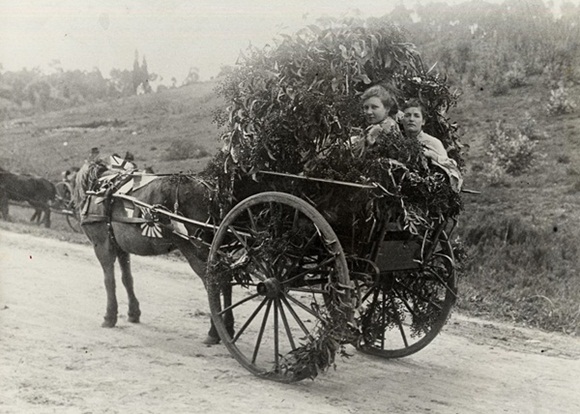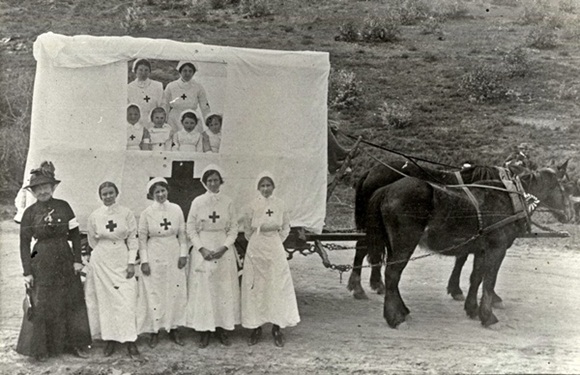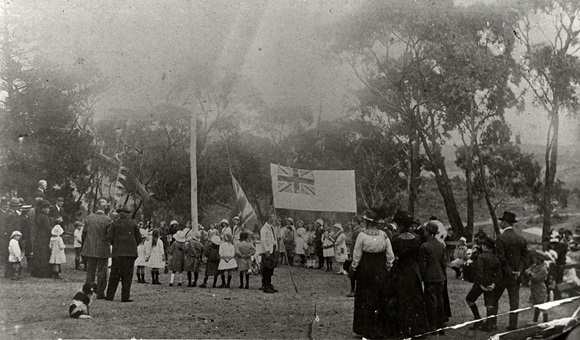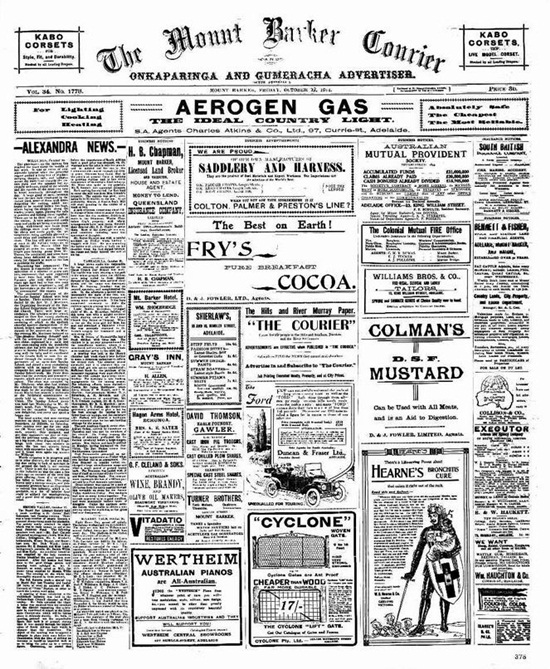Anecdotes, BDMs, Obits and Adverts – What Are These Records?
I have come across an incredible source of information relevant to my research. One that includes local town news choc full of anecdotes relating to the locals, mentions of births, deaths, marriages and obituaries, and a heap of adverts from the local area. So just what are these records?
Church Journals!
Really? You bet.
Let me give you some examples.
Here is a page from the “Local News” section (also called “Editorial Notes”, “Miscellaneous” or “Church News” in various editions) …
So you’ll see from this one page of Local News we learn of several people’s health troubles, several people moving, the introduction of some of the new equipment in the district, election chances, local meetings, a new business venture, a prize a local business won, and a bunch more. And that’s just a page from ONE journal!
You’ll also find some marriage and death notices (sorry no births afterall. But how do you write BDMs without births? DMs just doesn’t make sense) …
And of course the obituaries which are just awesome!
As well as anniversaries …
And other newsworthy events, like town sports news and this brave deed!
There’s also general history on the church, town and pioneers …
And if all that wasn’t fabulous enough, then there’s the adverts. Many from local businesses – others from Adelaide. Here’s just a few examples of them.
So you see, there is potentially so much you can find in Church Journals. And while my family were heavily involved in the church scene, many other researchers would say their family wasn’t, so wouldn’t think to look in Church Journals.
So I hope this has opened your eyes to the possibilities of what could be out there. If you are fortunate enough to have a local church journal for your area, and it has survived, check it out! You just never know.
All of these samples have been taken from the Salem Messenger, which is the journal for the Salem Baptist Church at Gumeracha, South Australia. Apart from covering news about the town itself, it also mentions happening in the areas around North Gumeracha (now Forreston), Kenton Valley, Blumberg (now Birdwood), Mount Torrens, Cudlee Creek and a few other localities.
Fortunately for me (and everyone else with an interest in Gumeracha’s history), the Salem Messenger has been digisited and is available on CD from Gould Genealogy & History. And if you’re interested in finding out more about church records and church journals, I suggest having a read of Shauna Hicks’ book on Finding Ancestors in Church Records: A Brief Guide.
Australia Day in the Gumeracha District in the Early 1900s
Australia Day as we know it, is a day to have off work, and spend time with family and friends, often having a picnic or barbecue – just having a lazy day. But it wasn’t always like this. In fact it wasn’t even a public holiday in all states until 1994.
To quote from the Australia Day website …
The tradition of having Australia Day as a national holiday on 26 January is a recent one. Not until 1935 did all the Australian states and territories use that name to mark that date. Not until 1994 did they begin to celebrate Australia Day consistently as a public holiday on that date.
So we find that in 1915 Australia Day was in fact held July 30th. Why that particular day I don’t know, but it was, and it was used not only to have a celebration, but also commemorate those who went to war, and used as a means for fundraising for the war.
The article from South Australia’s ‘Register’ newspaper, dated 2 August 1915 describes what the Gumeracha district (which covers the town of Gumeracaha, as well as the neighbouring towns of Forreston, Kenton Valley and Cudlee Creek) did on this day.
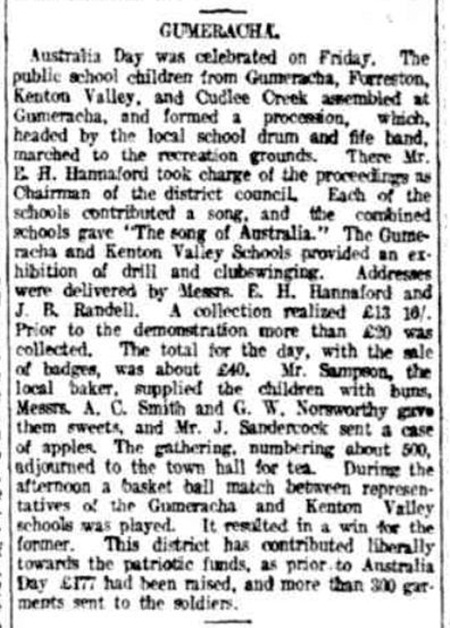
Australia Day at Gumeracha, The Register, 2 August 1915, p. 10. http://nla.gov.au/nla.news-article59422226
Again, we have to thank Trove newspapers for being there when we need it, and for providing information that we otherwise wouldn’t have found.
The photographs below are from a collection held by local historian, Alan Phillips. Grouped together in a box titled “Cudlee Creek”, it is believed that the following photographs are taken on Australia Day 1915 (or around then). Sadly not all are captioned, but those that are, have the captions noted below.
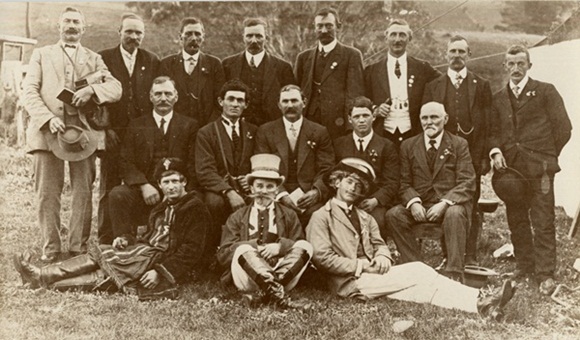
Australia Day, Cudlee Creek, c.1915
Back L-R: Arthur? Roepke, E.G. Ludewigs, Fred Tippett, Ted Pool, Bill Schlein, Fred Schultz, Stephen Redden, Ted Lambert
Middle L-R: Fred Langley, Bill Hille, Ern Hanaford, Bill Menz, Elliott Hannaford
Front L-R: Arthur Nagle, Ted Gallas, Le Lambert
South Australia’s Record Breaking Heatwave
At present Adelaide is the middle of another heatwave, we’re melting on our third day of over 40°C. It is one of those “burn-the-moment-you-step-outside” type of heatwaves. The “burn-yourself-on-the seatbelt” type heatwaves. On the plus-side this weather is absolutely fabulous getting your washing dry, though you will get sunburnt while you’re hanging it out.
While South Australia usually gets one or two heatwaves a summer, they usually hit later in summer. So to say that is has hit us all rather unawares, is an understatement!
For those who come from the colder parts of the world (ie. everywhere else), I just wanted to claify what a “heatwave” is defined as. The Bureau of Meteorology define it as “three or more days of unusually high maximum and minimum temperatures in any area”. Which is similar to my understanding of it, which is that it was a run of three consecutive days with the temperature 35°C or higher.
But hot weather in Adelaide is nothing new. A quick look on Trove comes up with numerous articles which mention the “record breaking” weather.
And while it hit 45°C the other day, it has been higher than that back in 1939!
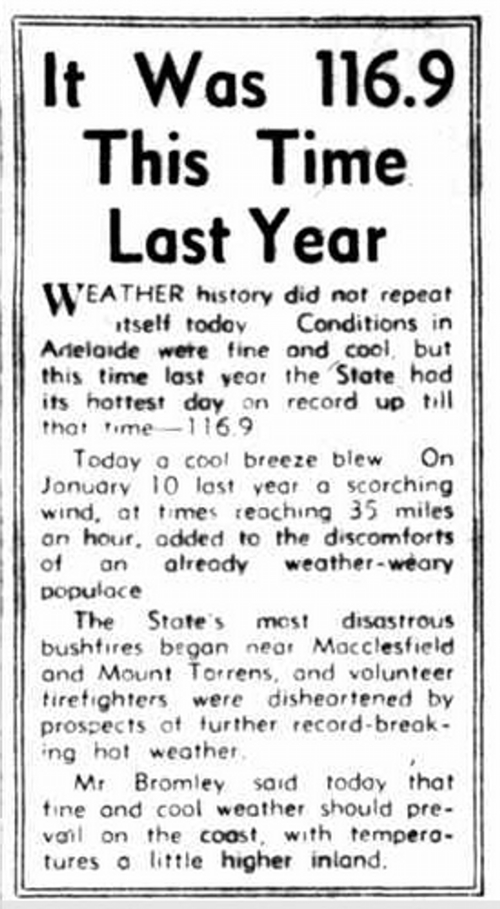
News 10 January 1940
http://nla.gov.au/nla.news-article131551907
A quick check on the fahrenheit to celsius converter tells me that 116.9°F is 47°C. So yes, that’s most certainly M-E-L-T-I-N-G weather!!
And just think … back in 1939 they wouldn’t have had all the comfort that we do with air conditioners in our house, car, workplace, shopping centres etc. So think what it would have been like back then.
The Newspaper 100 Years Ago
It has often been said, and rightly so, about many things, that they simply don’t make things they way they were.
These days you buy something, use for a bit, then throw it out and buy a new one when it breaks. Back then, things were MADE to last.
Having decided it was time to browse Trove again, I decided to see what a newspaper from 100 years ago looked like, and how it compared with today’s.
I chose to look at The Mount Barker Courier, which is the local paper for the area of South Australia that my family grew up in, and this issue is dated 23 October 1914. So it’s over 100 years ago.
I made it to the front page, and was instantly engrossed with all the adverts. You’ll see everything from cocoa, to corsets, gas to insurance, saddles and harnesses, a bronchitis cure, as well as gates, pianos, pig troughs, Ford cars, and even mustard.
See for yourself … (click here for a larger view)
Isn’t is beautiful.
I’m pleased to say that Mount Barker Courier, which is now known as The Courier, is STILL going … 101 years later. In a comparison of the old and new, you can see their current issue online. And maybe it’s just me, but I feel that there’s just no class to newspapers these days!
Please note, I have only used the Mount Barker Courier as an example. I was not meaning to pick on them specifically, but rather use them as an example of the difference bin the style of newspapers from back then and now.

